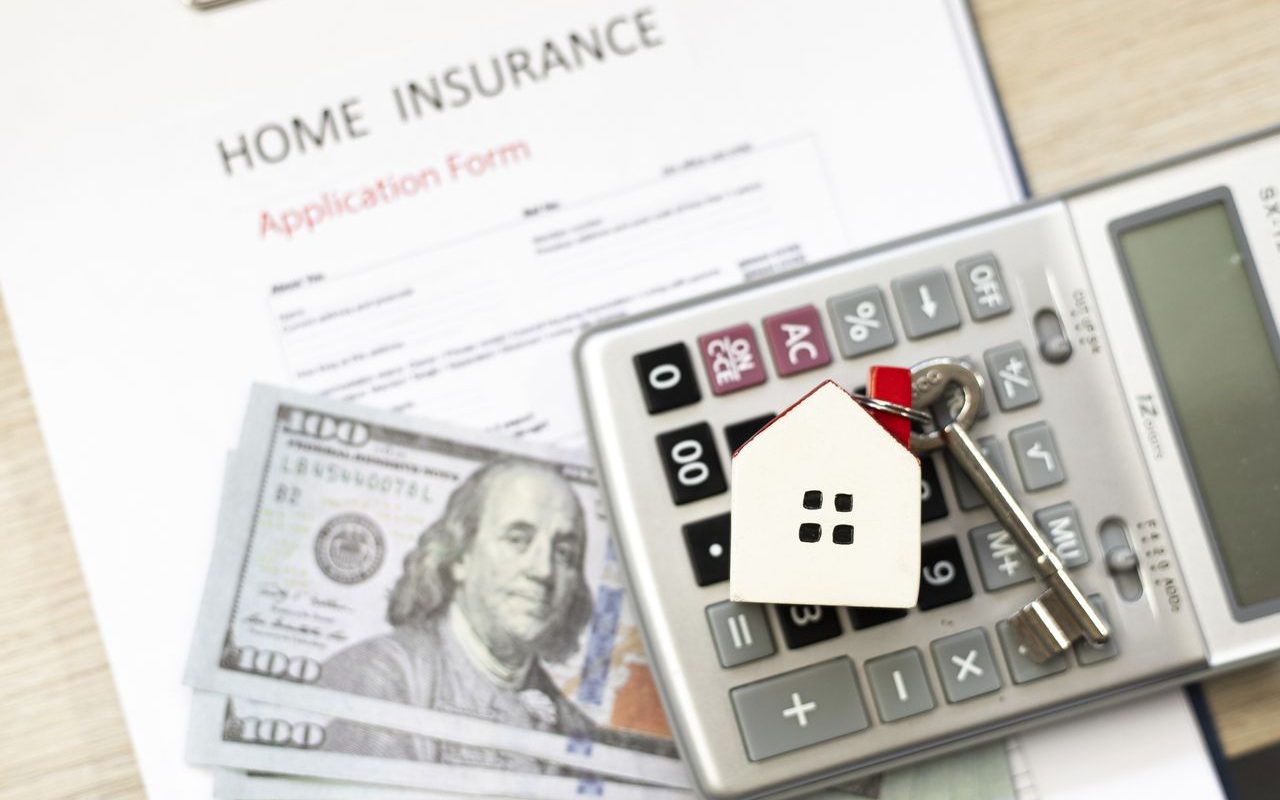Home insurance is an essential expense for homeowners, protecting your property, personal belongings, and providing liability coverage. However, many homeowners often feel that their premiums are too high or that they are not getting the best value for their investment. Lowering your home insurance costs without sacrificing critical coverage is not only possible—it’s also a smart financial strategy. This comprehensive guide is designed to help you navigate the world of home insurance and uncover practical tips and strategies to reduce your premiums, all while maintaining the protection you need for your most valuable asset.
In this article, we will explore the factors that contribute to the cost of home insurance and provide actionable advice on how to lower those costs. We’ll discuss topics ranging from adjusting your deductible and bundling policies to home improvements, maintaining a strong credit score, and shopping around for competitive quotes. By understanding how insurers determine premiums and taking proactive steps, you can achieve substantial savings and ensure that your policy aligns with your current needs.
Understanding the Components of Your Home Insurance Policy

Before diving into specific cost-cutting strategies, it is important to understand how your home insurance policy works and what factors contribute to the overall premium. Insurance companies assess risk by considering a variety of factors such as the age and condition of your home, its location, the cost to rebuild, and even your claims history. Additionally, features such as liability coverage, personal property coverage, and additional living expenses (ALE) play crucial roles in determining your policy’s value.
Insurers often calculate premiums based on the likelihood of a claim being filed. For instance, homes located in areas prone to natural disasters like hurricanes, earthquakes, or floods generally incur higher premiums because the risk of a claim is higher. Similarly, older homes with outdated wiring or plumbing systems may be viewed as riskier investments, leading to increased costs. Understanding these components allows you to better evaluate your current policy and identify areas where you can make adjustments to reduce costs without compromising on necessary coverage.
It is also important to recognize that home insurance is not a one-size-fits-all product. Each policy can be tailored to match the specific risks associated with your property and personal situation. This flexibility is key when exploring ways to lower your premium. Informed homeowners can often negotiate better terms and find discounts that may not have been obvious when the policy was first purchased.
Adjusting Your Deductible to Lower Premiums
One of the most straightforward ways to reduce your home insurance premium is by adjusting your deductible. The deductible is the amount you pay out-of-pocket before your insurance coverage kicks in. By choosing a higher deductible, you assume more of the initial risk, which often leads to a lower monthly or annual premium.
It is essential, however, to balance the deductible amount with your ability to pay in the event of a claim. For instance, if you opt for a significantly higher deductible, ensure that you have enough savings to cover this expense. A careful evaluation of your financial situation is crucial before making this decision. Many insurance experts suggest that if you can comfortably afford the higher deductible, the savings in premium costs over time can be substantial.
When considering an increase in your deductible, it is also worth reviewing how it affects different types of claims. Some policies have separate deductibles for specific perils (such as wind or water damage), and these might be adjusted independently. Before making any changes, it is advisable to consult with your insurance agent to understand the potential impact on your coverage. By tailoring your deductible strategy to your financial comfort level and risk profile, you can achieve a more affordable policy while still enjoying robust protection.
Bundling Policies for Significant Savings
Bundling is another effective strategy to lower your home insurance costs. Many insurance providers offer discounts if you combine multiple policies such as home, auto, and even life insurance with the same company. This approach not only results in savings but also simplifies your insurance management by having all your policies under one roof.
Insurance companies view bundled policies as a lower risk proposition and are therefore willing to offer more favorable rates. For example, if you already have auto insurance with a particular provider, asking about a bundle discount when purchasing home insurance can lead to considerable savings on both policies. In many cases, discounts can range from 5% to 25% or more, depending on the insurer and the number of policies bundled.
It is important to shop around and compare what different companies offer in terms of bundling discounts. Ultimately, bundling provides a win-win situation: you get the convenience of managing fewer policies and enjoy the financial benefits of discounted premiums.
Enhancing Home Security and Safety Measures
Investing in home security and safety improvements can have a significant impact on your insurance premium. Insurance companies appreciate homeowners who take proactive steps to reduce risk, and many offer discounts for features that enhance the overall safety of the property.
Installing security systems, smoke detectors, and burglar alarms can not only help prevent theft and property damage but also lead to lower insurance costs. For example, homes equipped with advanced fire detection systems and automatic sprinklers are less likely to suffer severe damage from fire, which can result in lower claims. Similarly, robust security systems that include video surveillance and alarm monitoring can deter burglars, reducing the risk of theft and damage.
Many insurers have specific programs that reward homeowners for implementing safety upgrades. These programs often include discounts that can reduce your premium by a significant percentage. In some cases, insurers even offer a one-time discount when you install new safety devices. It is worthwhile to discuss with your insurance agent which upgrades might qualify for these discounts and to verify that your new equipment meets the provider’s requirements.
Moreover, some smart home technologies not only improve security but also offer additional convenience. Modern systems can be monitored remotely via smartphone apps, allowing you to receive real-time alerts if something unusual occurs. Over time, these investments not only protect your home but also contribute to lower long-term insurance costs, making them a smart choice for risk-conscious homeowners.
Investing in Home Improvements and Maintenance
Regular home maintenance and improvements can play a vital role in reducing your home insurance costs. Insurers are more likely to offer lower premiums to homeowners who invest in the upkeep and enhancement of their property. This is because well-maintained homes are less likely to experience damage or suffer from issues that could lead to claims.
One key area to focus on is updating your home’s infrastructure. Modernizing electrical systems, plumbing, roofing, and other structural elements can decrease the likelihood of issues such as fires, leaks, and structural damage. For instance, an updated electrical system that meets current safety standards can significantly reduce the risk of fire a risk that often leads to high claims and, consequently, higher premiums.
Energy-efficient upgrades, such as installing new windows, insulation, and energy-saving appliances, may also qualify for discounts. Not only do these improvements contribute to a lower insurance premium, but they can also reduce your overall utility costs, making them a win-win investment. Regular maintenance such as cleaning gutters, inspecting the roof, and ensuring proper drainage can help prevent minor issues from turning into major problems that require expensive repairs.
In addition to structural improvements, consider making aesthetic upgrades that enhance the overall value of your home. A well-kept property is viewed more favorably by insurers, who are less likely to view it as a high-risk investment. Documenting these improvements with before-and-after photos and receipts can be helpful if you need to provide evidence during a claims process. By maintaining your home in top condition, you not only protect your investment but also create a compelling case for lower premiums when you renew your policy.
The Role of Your Credit Score in Determining Premiums
Many insurance companies use your credit score as a factor in determining your home insurance premium. Although this practice can be controversial, studies have shown a correlation between creditworthiness and the likelihood of filing claims. A higher credit score is often interpreted as a sign of financial responsibility, which can translate to lower premiums.
Improving your credit score may involve paying down debt, ensuring that you make timely payments on all your bills, and regularly monitoring your credit report for inaccuracies. Taking proactive steps to boost your credit score can have a long-term impact on your insurance costs, as even a modest improvement can lead to lower rates. Many financial experts recommend checking your credit report at least once a year and addressing any discrepancies immediately.
For homeowners who are already diligent about their finances, maintaining a strong credit score is an ongoing process. Some insurers offer additional discounts to policyholders who have high credit scores, recognizing the lower risk associated with these individuals. Understanding how your credit score affects your home insurance premium can empower you to take control of your financial health and reduce your overall costs.
Shopping Around and Comparing Multiple Quotes
One of the most effective ways to lower your home insurance costs is to shop around and compare quotes from multiple providers. The insurance market is highly competitive, and premiums can vary widely between companies for similar coverage. Taking the time to gather and compare quotes can reveal significant savings opportunities.
When comparing quotes, make sure to evaluate the coverage details carefully. Look beyond just the premium cost and assess the deductible levels, coverage limits, and exclusions in each policy. Sometimes a lower premium might come with trade-offs in coverage that could be detrimental in the event of a claim.
Additionally, consider contacting insurance agents directly to negotiate better terms. Insurance agents can often offer insights into discounts and promotions that may not be advertised online. They may also be able to tailor a policy to your specific needs, ensuring that you are not paying for coverage you do not need. The key is to be thorough in your research, and remember that the lowest price is not always the best value. Ensuring that you get adequate coverage at a competitive rate should always be your top priority.
Leveraging Discounts and Savings Programs
Most insurance companies offer a variety of discounts and savings programs that can significantly reduce your home insurance costs. These discounts are designed to reward policyholders for taking proactive steps to mitigate risk and demonstrate financial responsibility. Common discounts include those for bundling policies, installing home security systems, and maintaining a claim-free record.
For instance, many insurers offer discounts if you have no recent claims or if you have a history of responsible home maintenance. Loyalty discounts for long-term customers are also common, as are discounts for paying your premium annually rather than in monthly installments. Some companies even provide incentives for new customers, making it worthwhile to periodically review your policy and check if there are new discounts available.
It is beneficial to discuss with your insurance agent all the possible discounts you might qualify for. Ask detailed questions about each discount program and request a breakdown of how much you could potentially save.
Another area to consider is the use of technology-enabled devices. Many insurers offer specific discounts for installing smart home devices that reduce the risk of damage. These discounts can sometimes be combined with other programs, leading to even greater savings. It’s important to keep track of these opportunities and regularly check with your provider to ensure that you are receiving every discount for which you are eligible.
Regular Policy Reviews and Reassessments

Your home insurance needs can change over time, and as a result, it is critical to review your policy on a regular basis. Annual policy reviews allow you to evaluate whether your coverage still aligns with your current situation. For example, if you have made significant home improvements, your replacement cost may have increased, and you might need to adjust your coverage accordingly. Conversely, if you have taken steps to lower your risk, such as installing new safety features, your insurer may offer additional discounts during the renewal process.
Regular policy reviews also provide an opportunity to compare your current policy with new offerings from other companies. As the insurance market evolves, new discounts and coverage options may become available that were not previously offered. This continuous review process is essential to ensuring that you are not overpaying for your coverage. Documentation is key—keeping records of home improvements, security upgrades, and any other changes can provide valuable evidence during these reviews. Proactive engagement with your insurer during policy renewal can often lead to negotiations that result in lower premiums or better coverage terms.
Working with a Knowledgeable Insurance Agent
A well-informed insurance agent can be an invaluable resource when it comes to lowering your home insurance costs. Agents have the expertise and market knowledge to help you navigate the complexities of insurance policies and identify opportunities for savings. They can provide personalized advice based on your unique circumstances and help you understand the nuances of different coverage options.
By working closely with an agent, you can gain insights into discounts and programs that may not be widely advertised. A good agent will take the time to review your current policy, assess your needs, and recommend changes that can lower your premium without compromising on essential coverage. Moreover, agents often have access to tools and resources that can facilitate competitive comparisons, ensuring that you are getting the best possible deal.
Developing a strong relationship with your insurance agent also means that you have a dedicated professional who can help you navigate any issues that arise during the policy period. Whether you have questions about a particular discount, need assistance with a claim, or want to adjust your coverage, having a knowledgeable agent on your side can make all the difference in managing your insurance costs effectively.
Understanding the Impact of Location and Environmental Risks
Location is one of the most significant factors influencing your home insurance costs. Properties located in areas prone to natural disasters such as hurricanes, earthquakes, or floods are typically considered higher risk by insurers, resulting in higher premiums. Understanding the specific environmental risks associated with your area can help you take steps to mitigate those risks and potentially lower your costs.
For example, if you live in an area that is susceptible to hurricanes, installing storm shutters or reinforcing your roof can significantly reduce the risk of damage. Similarly, if you reside in a flood-prone area, elevating your home or improving drainage systems may not only protect your property but also qualify you for lower rates. It is worthwhile to research local building codes, safety initiatives, and disaster preparedness programs.
Taking proactive measures to reduce risk in your area can have a direct impact on your insurance premium. Even small investments in mitigating risk can lead to significant long-term savings. Additionally, if you can demonstrate that your home has been retrofitted or upgraded to withstand local environmental hazards, insurers may view your property as a lower risk, further reducing your premium.
The Long-Term Benefits of a Proactive Financial and Insurance Strategy
Lowering your home insurance costs is not solely about cutting expenses it is about creating a sustainable financial strategy that protects your future. By taking proactive steps to manage your insurance costs, you can free up funds for other important investments and reduce the overall stress on your budget.
A proactive approach involves continuous monitoring of your insurance needs, regularly reviewing your policy, and staying informed about market trends and new discount opportunities. It is also essential to integrate your insurance strategy with your broader financial planning. A lower insurance premium can translate into increased savings, which you can then invest in home improvements, retirement funds, or emergency reserves.
Moreover, the process of actively managing your insurance costs can lead to a better understanding of the risks associated with homeownership. This knowledge empowers you to make informed decisions that not only reduce your premiums but also enhance the safety and value of your home over time. Financial discipline in maintaining a strong credit score, managing your deductibles, and choosing the right policy can have lasting benefits far beyond immediate savings.
Consider setting aside time each year to review your finances, discuss your policy with your agent, and evaluate any changes in your circumstances that may affect your insurance needs. This long-term strategy is a cornerstone of financial security and peace of mind, ensuring that you are always prepared for the unexpected while making the most of your available resources.
Conclusion: Your Path to Lower Home Insurance Costs
Achieving lower home insurance costs is both an art and a science. It requires a deep understanding of how your policy is structured, the factors that influence premiums, and the proactive measures you can take to manage risk effectively. The strategies outlined in this guide are designed to empower you to make informed decisions, negotiate better terms, and ultimately, enjoy significant savings without sacrificing the protection you need for your home.
From adjusting your deductible to bundling policies, investing in home security, and maintaining a strong credit score, every tip provided is aimed at reducing your financial burden while ensuring that you have comprehensive coverage. By adopting a proactive approach, reviewing your policy regularly, and leveraging all available discounts and savings programs, you can create a home insurance strategy that fits your budget and your lifestyle.
Your home is one of your most important investments. Protecting it should never come at an exorbitant cost, and with the right approach, you can achieve both affordability and peace of mind. As you implement these tips, you may find that your overall financial stability improves, allowing you to focus on the things that truly matter in life.
Take action today by reviewing your policy, discussing potential changes with your insurance agent, and exploring all the discounts for which you may qualify. Lowering your home insurance costs is not only a matter of saving money it is about building a secure future for you and your family. Stay informed, be proactive, and enjoy the benefits of a well-managed insurance strategy that keeps your home protected while reducing your financial stress.



